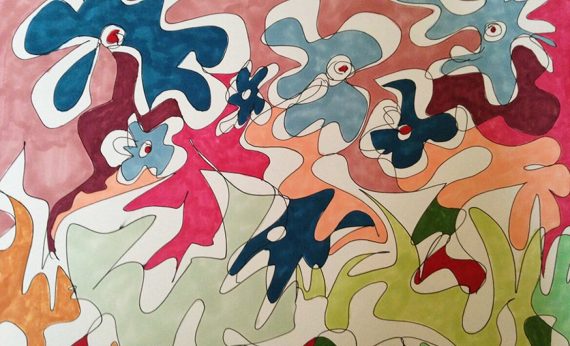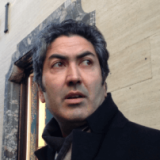Ramadan is a blessed and sacred month which lasts for 29 or 30 days and begins around 10 days earlier every year. It is the ninth month of the lunar calendar and is important since fasting is one of the five pillars of Islam. It is also a spiritual and reflective time for Muslims and one of enormous self-discipline in our hectic 21st century existence. It is a personal struggle and celebration while also being part of a collective culture and Ummah.
Days 1-7
Dates are a traditional fruit used to break the fast and are easy to digest, contain natural sugary energy and are high in nutrients and fibre. Dates also protect the person from stomach pains after a change in their normal eating pattern.
Every living thing is made of water and it is also needed for our survival. It cools the air, nourishes the flora and fauna and helps to keep us physically clean through purification. It is present in much of Islamic architecture as both a symbolic and practical design element.
Halal is asking Allah’s permission to slaughter an animal. The head facing Qibla- a sharp knife makes a clear cut through the throat and the blood is drained from the animal avoiding any suffering. Respect for the sacred nature of life and the soul of the creature.
One of our most basic instincts from birth is to drink- our brains process the needs of the body. This thirst can be particularly challenging in hot climates but the moment of quenching is also extremely rewarding.
Most cultures have special cuisines which are reserved for Ramadan. Haleem for example is a staple for breaking the fast in Hyderabad (India) and is made of wheat, barley, lentils, spices and meat. Güllaç is seen everywhere in Istanbul during Ramadan and is a dessert made with thin wafer sheets sweetened with milk, rose water and topped with fresh pomegranates.
Taste is one of the five senses. Sweet, bitter, sour, salty and delicious with an aftertaste. Everything is heightened.
A board, plank or flat top piece- a table. Where the family gathers the most. Cups of water and juice. Plates of fruit and vegetables. Hot dishes. A frenzy of conversation which was preceded by a quiet contemplation. A stable structure that is always there and feels comfortable.
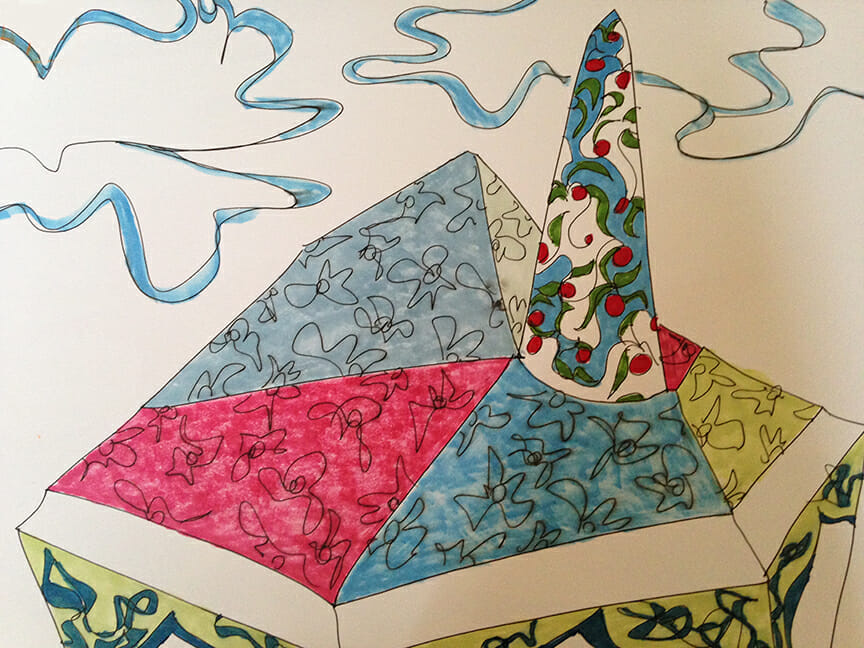
Days 8-13
The moon formed not long after earth- this is our close and natural ‘satellite’. Shifting, glowing and enlarged-the lunar calendar guides us.
Light is what is visible to the human eye- red, orange, green, blue, purple colors. The natural illumination from the early morning and throughout the day and the electronic illumination of Mosque exteriors.
Looking up at the constellations and patterns of clouds in the sky. The dense portion of the atmosphere. The place for rainbows, birds, kites and planes. Navy, turquoise, powder and cobalt blue.
Seeing stars through observatories, astrolabes, quadrants and Arabic names- Alcor, Algebar, Alphecca, Alsuhail, Dabih, Furud, Gienah, Heka, Kochab, Matar, Nashira, Sadalbari, Wasat, Zawiah. Children dreaming of faraway places and planets.
Recommended
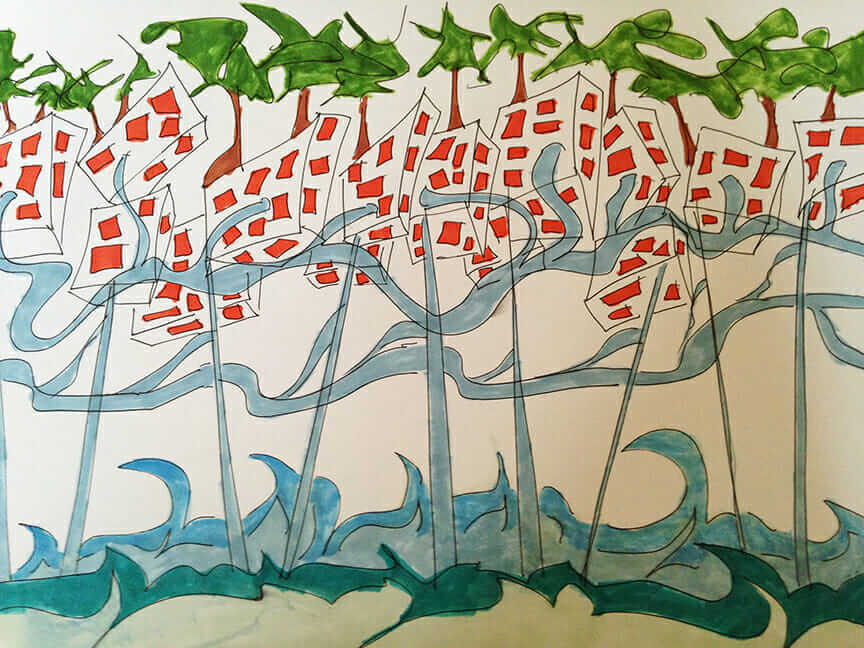
Days 14-17
Habits are part of our subconscious routine behaviour. Those things that we cling to and do with regularity; changing the problematic ones and increasing the positive ones.
Family offers unconditional love. The effort it takes to make meals for those who are fasting. To care for others and to pass on knowledge and customs and sacred laws through practise and teaching.
Friends offer conversation, companionship and stories. Drinking tea until late in the morning.
Strangers become part of a Brotherhood and sisterhood through the trials and tribulations of fasting. Eating iftar together with those you do not know and feeling a kindred spirit. Making conversation or simply sharing the same space.
Days 18-20
Exhaustion comes and the sleep is in shifts. Reduced nights from 1 to 2am; going back to bed at 4am after the Fajr prayer and waking up late. Naps and rest become the most sought after and precious comfort during the month.
Birds have over ten thousand species. They sing in the morning hours and co-operate through flying, migration, eating and breeding. Sitting in trees and on rooftops they swallow food whole. Sleeping during flight and soaring with feathers colored yellow, red and blue. They create nests from string, sticks, wire and garbage and offer both poetry and power.
Flowers offer the intoxicating scent of ıhlamur or linden trees. The pink geraniums splashed on windowsills of Üsküdar. Patterns of blossoms in the parks. Reproduction, beauty and food.
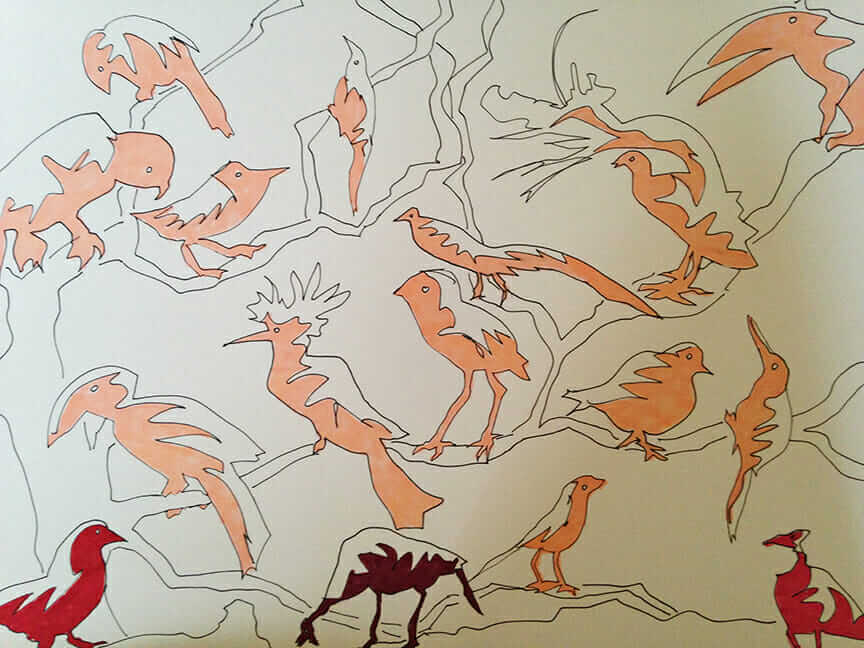
Days 21-24
Reading in the early morning hours can be an ideal time to process words, thoughts, past experiences and knowledge.
Recitation is both an individual and communal performance. Many people finish the entire Quran during special prayers (Taraweeh) late in the evening.
Ottoman mosques are some of the great architectural creations throughout history. Blue and green glazed tiles, piercing Minarets and cool courtyards offer a space to meditate the endlessness of the universe where there is no beginning and no end. Innovative design which takes inspiration from this and blurs the distinction between interior and exterior and front and back.
Laylat al- Qadr is the powerful night when the first verses of the Quran were revealed to Prophet Muhammad (pbuh). During the last ten days of Ramadan on an odd night the Mosques are filled with supplications for family and friends both living and dead seeking the blessings and forgiveness of Allah.
Days 25-30
Time is told through shadows, sundials, clocks and watches. Thinking of the past, present and future. The rhythm of the three prayers (Fajr, Zuhr, Asr) leading up to Maghrib. Waiting for the day to finish and the sun to set can feel slow and stretched out but by the last days of the month everything seems to move faster and one tries to do many things before it’s over.
A clarity of thoughts happens and one becomes lucid and extremely sensitive and fluid with ideas.
Sounds come through mediums such as air, water and solid objects. Vibration and amplification of words. The beating of drums in Istanbul to awaken you for your morning meal followed by the birds talking and singing. The pounding of the city streets, buses, cars and the virtual quiet before the fast is broken. The celebratory noise of eating together.
Dreams are a stream of visual imagery. A narrative story or a fractured experiment. Green fields, seasons and loved ones.
Inspiration comes early in the morning after suhoor. A feeling that one should do something innovative and knowing and believing you can accomplish something new.
A journey is to travel over a physical distance by foot, flight, bike, car, train or boat. To work and struggle with getting to your destination while seeking to explore and discover. To cover spiritual distance and make your way through the month day by day across hunger, thirst, culture and compassion. The first day of the new moon (month of Shawwal) is coming… the celebration of Eid (Bayram)!
